Prevent pressure injuries at the heels with NPIAP guidelines
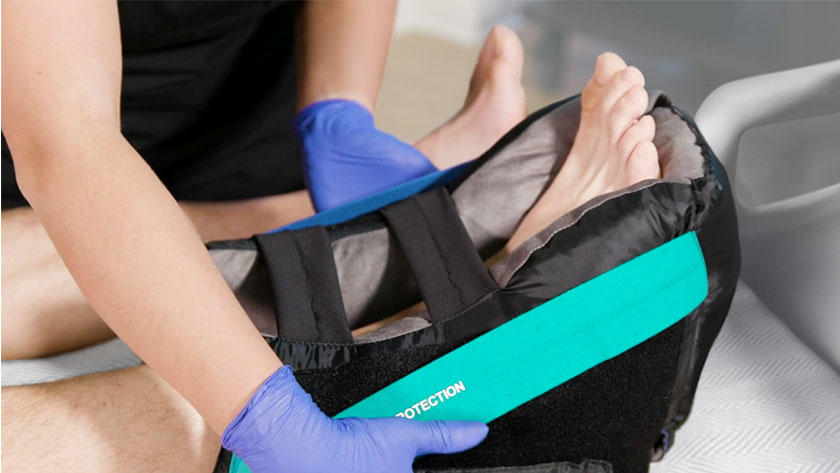

Sometimes old wives’ tales just don’t hold up to actual evidence. Medline Clinician Katie James BA, RN, CWCN, recalls the days when her grandmother used to rinse a cut or scrape, then left it to “air out and scab up,” James says. “In fact, for the past 40 years, we’ve known through evidence-based research that moist wound healing is the best course of action.” James refers to this as an example of how true clinical evidence drives best practices in healthcare. “It’s how medicine progresses,” she says.
When it comes to evidence-based best practices for skin health, the go-to resource is the National Pressure Injury Advisory Panel’s (NPIAP) comprehensive 2019 Clinical Practice Guideline for Prevention and Treatment of Pressure Ulcers/Injuries.
Created in collaboration with several international pressure injury organizations, the updated Guideline is divided by pressure injury prevention or treatment topic. Hundreds of clinicians reviewed thousands of research studies to come up with evidence-based clinical practice recommendations of various strength levels.
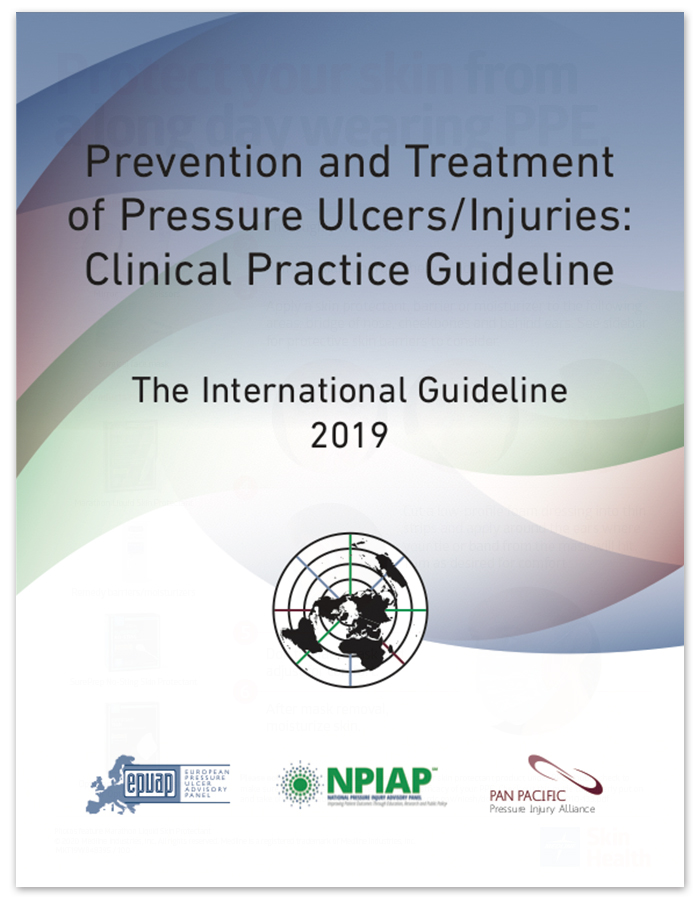
Let the NPIAP Guideline guide you
The authors of the NPIAP Guideline explain: “Strength of recommendations indicate the extent to which one can be confident that adherence to a recommendation will do more good than harm and are intended to assist health professionals to prioritize interventions.”1
When the NPIAP Guideline authors deemed an area of practice important to address, but didn’t find enough evidence to support a recommendation, they created “Good Practice Statements.” James notes, “Facilities often use good practice statements to help write policies and procedures for skin health, incorporating them so that nurses can provide patients with the most current and up-to-date processes.”
Guideline strength levels1
Here is how the NPIAP breaks down each strength and recommendation level.
| A |
|
| B1 |
|
| B2 |
|
| C |
|
| GPS | Good Practice Statement Statements that are not supported by a body of evidence as listed above but considered by NPIAP Guideline Governance Group to be significant for clinical practice. |
Strengths of Recommendation ratings
| ⇡ ⇡ | Strong, positive recommendation: Definitely do it |
| ⇡ | Weak, positive recommendation: Probably do it |
| ↔ | No specific recommendation |
| ↓ | Weak, negative recommendation: Probably don’t do it |
| ⇣ ⇣ | Strong, negative recommendation: Definitely don’t do it |
It’s up to you, your team and your organization to decide which recommendations and good practice statements fit into your policies and protocols. Incorporating them into your everyday practice can help you feel confident about doing the right thing for your patients.

Heel protection
One section of the NPIAP Clinical Practice Guideline focuses on the prevention and treatment of pressure injuries on the heels (pages 145 to 154). Why a specific area dedicated to heels? Because studies show that as many as 38.5 percent of stage 4 pressure injuries occur at the heels.1
38.5%
of pressure injuries occur at the heels
The Guideline authors explain, “Because the heel is covered with a small volume of subcutaneous tissue, mechanical loads are transmitted directly angular to the bone.” 1 The Guideline recommendations are meant to help staff standardize heel skin assessments, positioning and protection of heels.
Review the NPIAP Guideline’s main points about heel protection to help reduce your patients’ risk of pressure injuries:
1 | Determine risk factors
As part of a regular skin assessment, it’s important to pay close attention to the heels, especially with medically complex patients.
NPIAP recommendation 6.1: Assess the vascular/perfusion status of the lower limbs, heels and feet when performing a skin and tissue assessment. 1
Strength of evidence: B2
Strength of recommendation: ⇡ ⇡
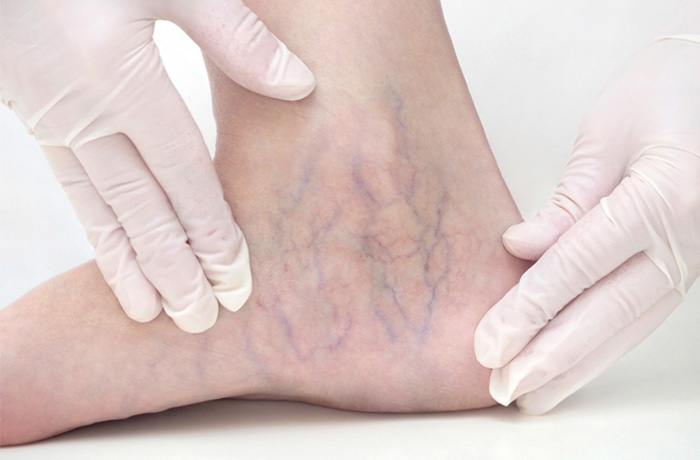
A heel assessment should include 4 things: 1
- Physical assessment of the heel
- Patient’s past clinical history
- Previous heel pressure injuries
- Current physical and medical status
Assessment considerations: 1
- If a patient has peripheral arterial disease, it may increase their risk of heel pressure injuries.
- Check skin on heels regularly, even if a prophylactic dressing is being used.
- Evaluate blood supply to the heel by checking
-
- Skin temperature
- Peripheral pulses
- Skin color
- Skin quality and appearance
- Patient’s sensation to touch
2 | Position heels properly
Studies show that elevating the heels is “more effective at preventing pressure injuries than a care regimen that does not include heel elevation.”1
NPIAP recommendation 6.2: For patients at risk of heel pressure injuries and/or with stage 1 or 2 pressure injuries, elevate the heels using a specifically designed heel suspension device or a pillow or foam cushion. One option for heel suspension is HEELMEDIX.
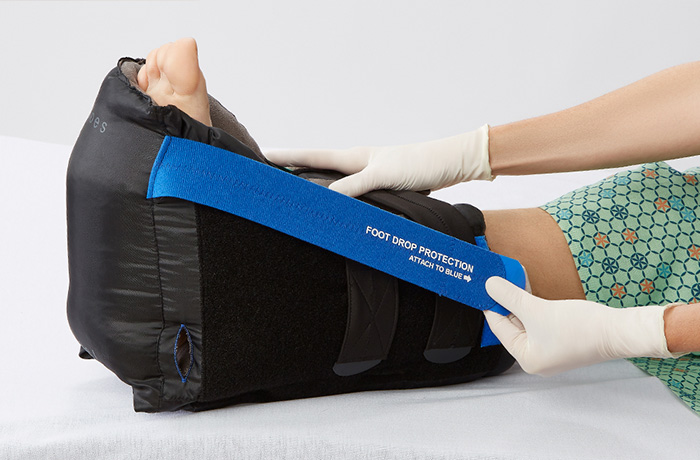
Be sure to offload the heel completely to distribute the weight of the leg along the calf without placing too much pressure on the Achilles tendon and the popliteal vein, a major lower body blood vessel.1
With individuals who already have a stage 3 or greater heel pressure injury, the same applies. However, it is not recommended to use pillows or foam cushions, only specifically designed heel suspension devices.
Strength of evidence: B1
Strength of recommendation: ⇡ ⇡
Positioning considerations:
- Ensure heels are free from the surface of the bed.
- Knee should be flexed about 5 to 10 degrees.
- Distribute pressure evenly.
- Use a positioning device if necessary.
- Remove the heel suspension device regularly to assess skin integrity and perfusion status.
Choose a heel suspension device that takes into account the following:
- Individual’s clinical condition and leg mobility
- Skin integrity and swelling
- Anatomical appearance and alignment of the hip, foot and lower leg
- Individual care plan
- Patient’s comfort in the device
- Manufacturer’s guidelines
NPIAP Good Practice Statement 6.3: The NPIAP also includes a good practice statement that also recommends elevation of the heel using a device for heel suspension for patients with a stage 3 or greater heel pressure injury.
3 | Add a prophylactic dressing
In combination with heel elevation, prophylactic dressings like Optifoam Gentle Heel can be applied to the heel. In lab tests, they’ve been shown to help “reduce the forces of pressure, friction and shear through multiple layer construction; protect fragile skin from shear with specially designed adhesives; and influence microclimate.”1 Research has also shown that using prophylactic dressings along with offloading resulted in fewer heel pressure injuries than without using the dressing.1
NPIAP recommendation 6.4: Use a prophylactic dressing as an adjunct to heel offloading and other strategies to prevent heel pressure injuries
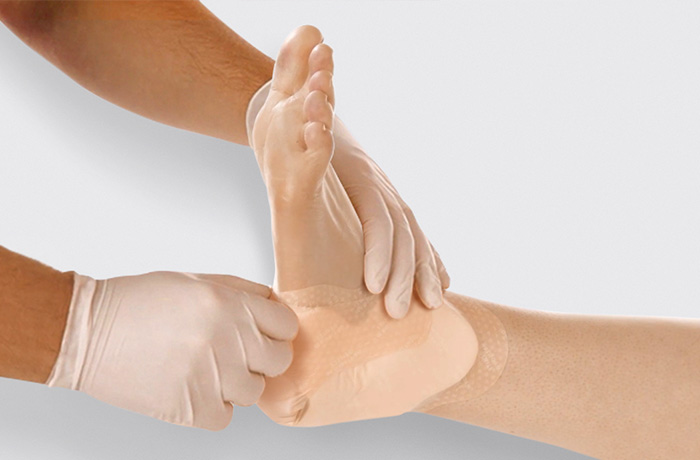
Strength of evidence: B1
Strength of recommendation: ⇡
Prophylactic dressing considerations:
Keep these things in mind when selecting a prophylactic dressing:
- Dressing size and design
- Ability to manage microclimate
- Ease of application and removal
- Ability for the dressing to stay on
- Ability to regularly assess the skin under the dressing
- Patient preference, comfort and any allergies
- Friction between the skin and the dressing
- Cost and accessibility
Key takeaway
When it comes to pressure injury prevention and treatment, you don’t have to choose between evidence-based protocols and best practice: Evidence-based is best practice. The NPIAP’s Clinical Practice Guideline offers caregivers important recommendations and good practice statements to help prevent and treat pressure injuries, all based on research. Heel protection is an important section in the Guideline because of the high prevalence of pressure injuries at the heel. With proper assessments, elevation and dressings, you can help reduce the risk of pressure injuries for your patients.
Innovative products to help prevent pressure injuries on the heel
Make skin health second nature by selecting solutions with proven technology. The two products below help you follow NPIAP’s evidence-based best practices.
HEELMEDIX Advanced Heel Protectors offload heels.
- Educational packaging and instructional screen-printing.
- Color-coded strap system ensures proper placement.
- Color-coded DVT tubing ports make it easy for your facility to standardize.
- Side straps help protect against foot drop.2
Optifoam Gentle Heel can be used as part of a pressure injury prevention procotol.
- Silicone adhesive makes it more comfortable to wear and remove.
- Easily check skin or wounds underneath the dressing.
